To examine the progress of different departments or projects within a company, management usually requests reports that expound on the same. The primary objective of a business report is to help in decision-making. Therefore, it can be defined as,
A business report is a formal document that is used to analyze a given situation, issue, or project by providing a summary of data, research, information, and any other relevant information that would be useful in decision-making within a company.
The author gives recommendations that decision-makers can adopt or consider while making the necessary plans. A formal report can be several pages long, depending on the purpose and topic of the report.
Some of the objectives of writing the formal report include:
- Through analysis, the business report’s information can be used to inspect the best solution from the possible alternatives to the problem at hand.
- While doing analysis, one can apply the different business and management theories to show the variation of outcomes before giving suggestions.
- The report shows one’s evaluation skills of different scenarios within a business.
- Conclusions on a problem/issue can be made through a business report, making it easier for management to resolve the problem.
- The report provides decision-makers with a range of suggestions to consider, which encourages a participatory approach to solving issues within a company.
- It presents clear and distinct communication skills and promotes such a culture in a company.
Free Templates

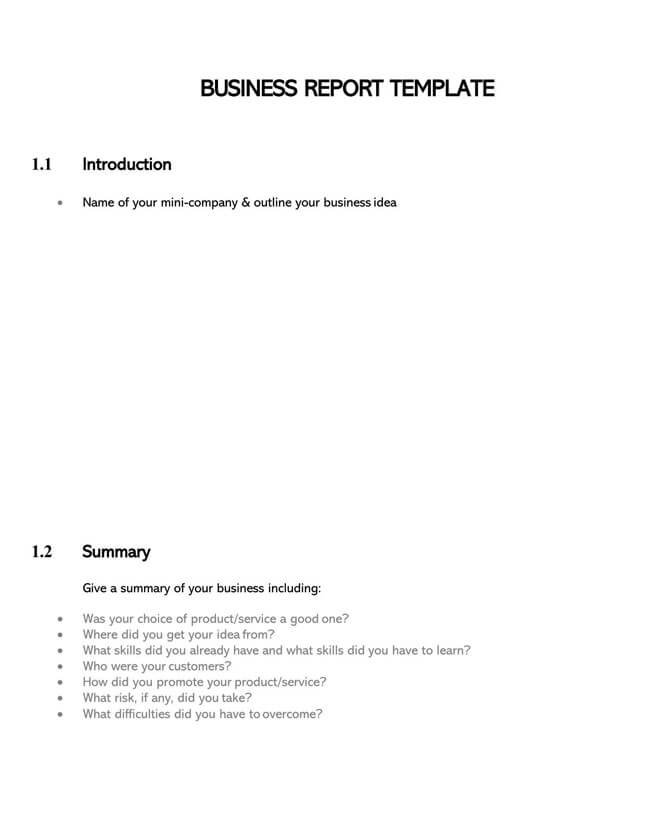
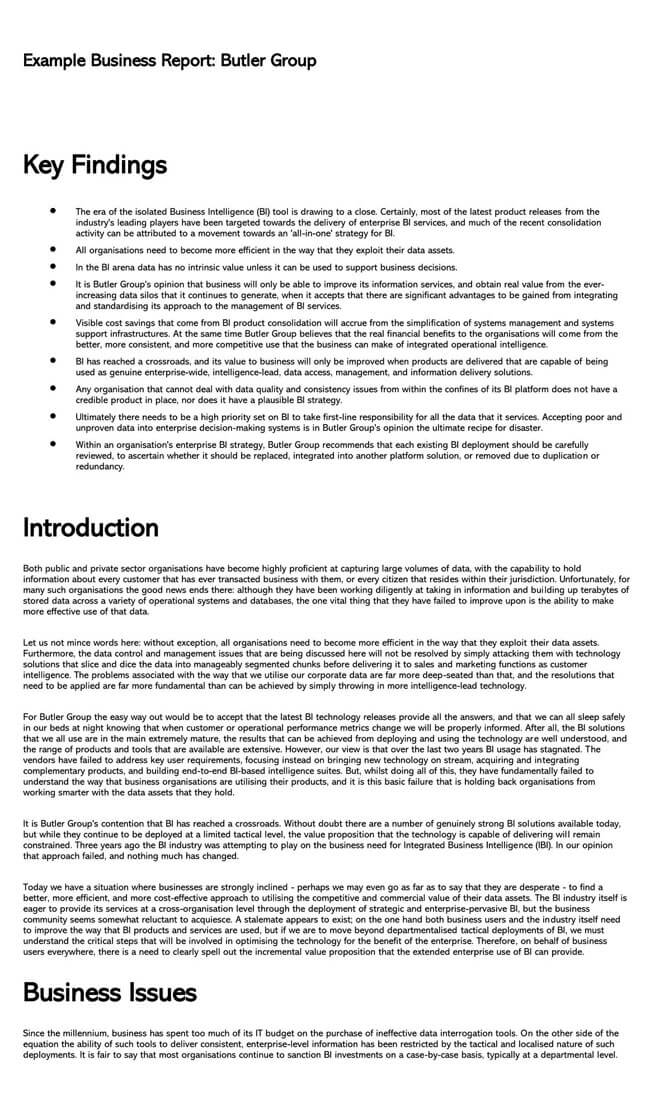
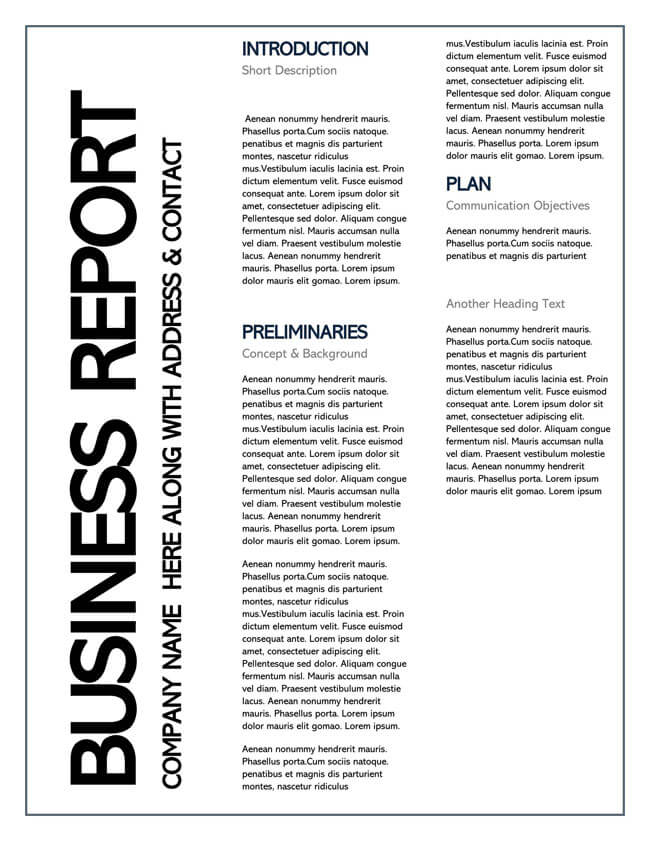
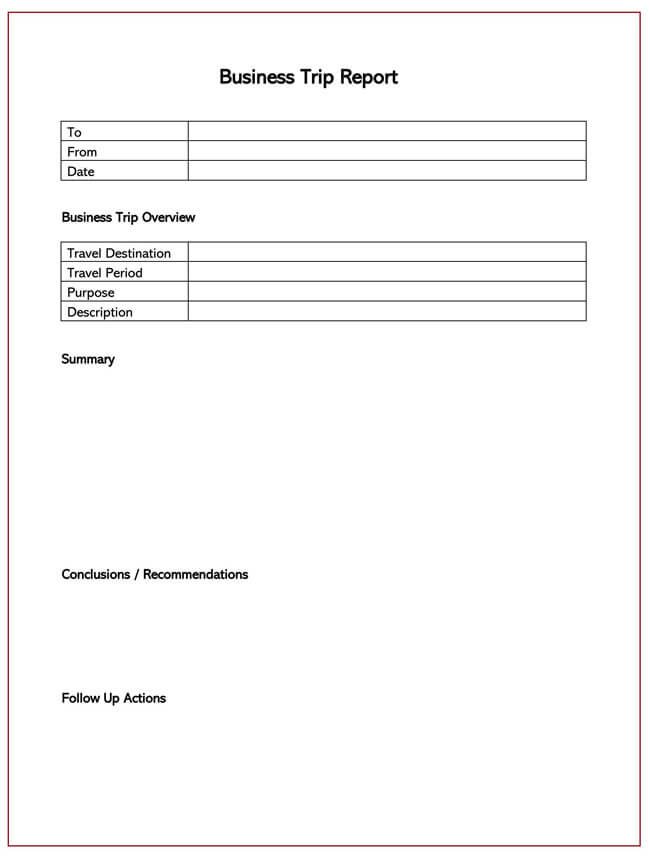
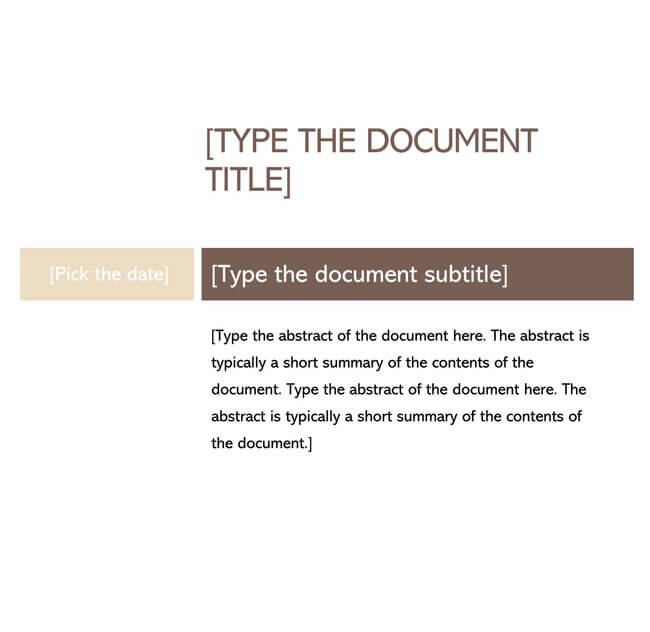
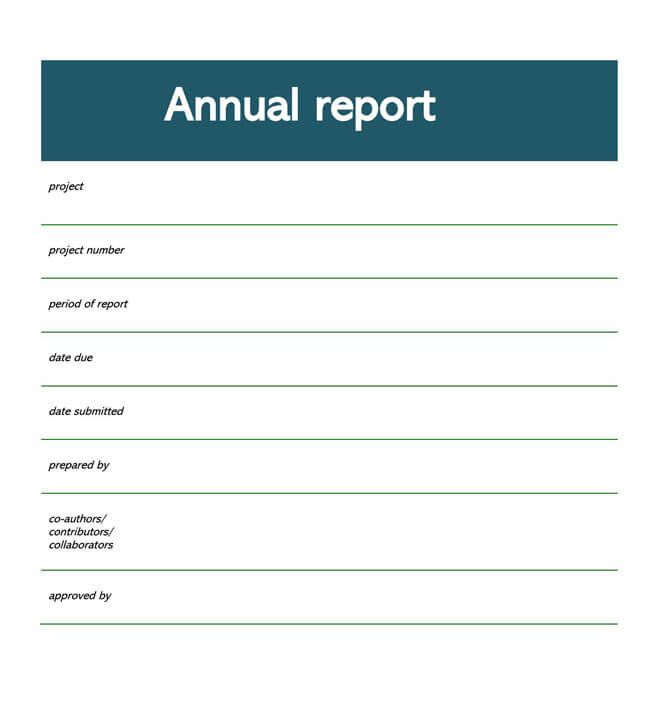
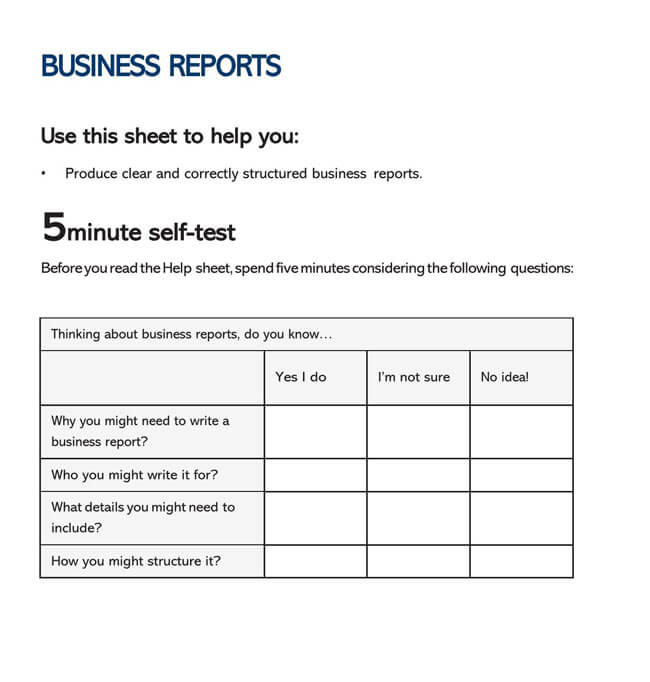
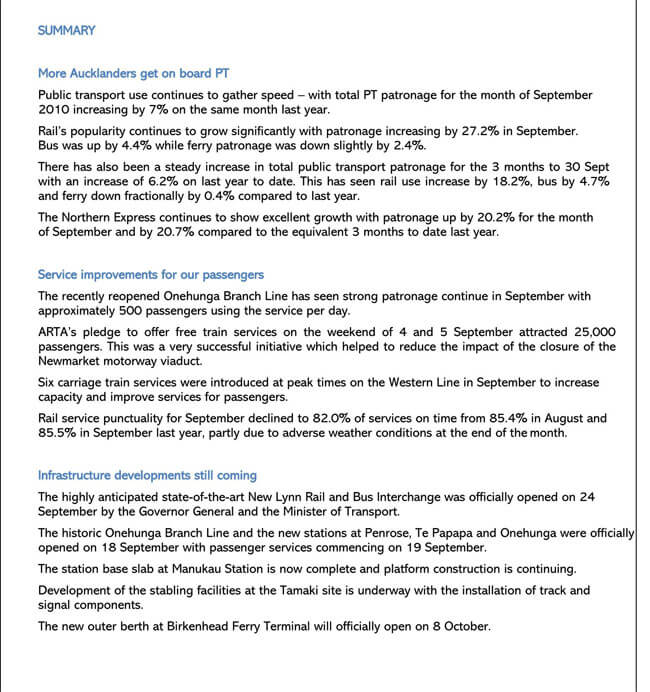
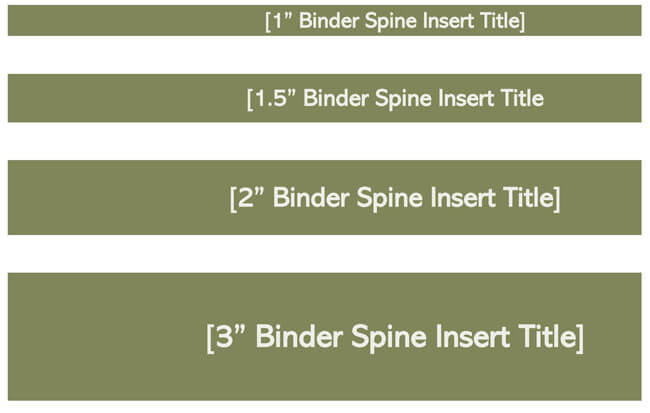



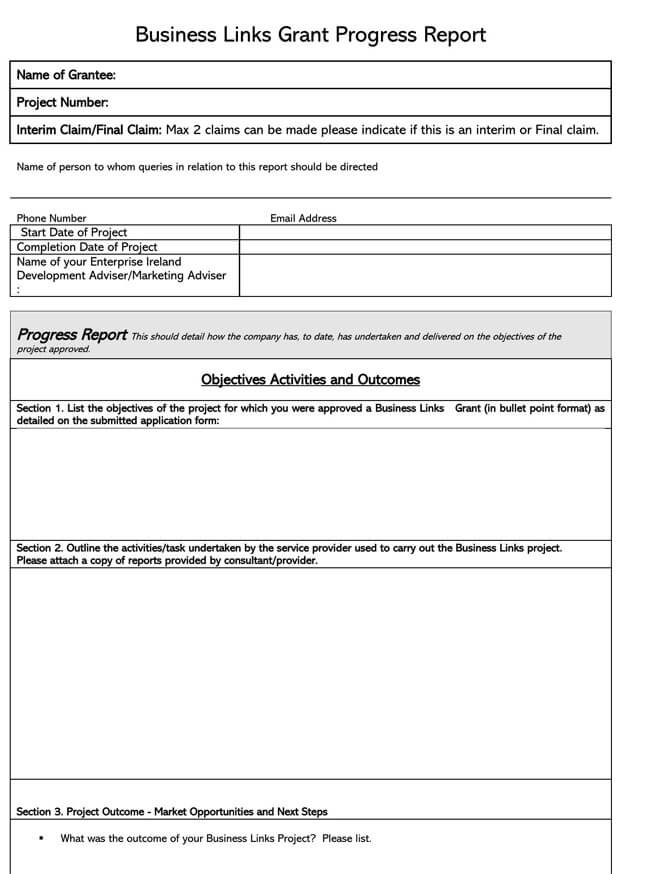
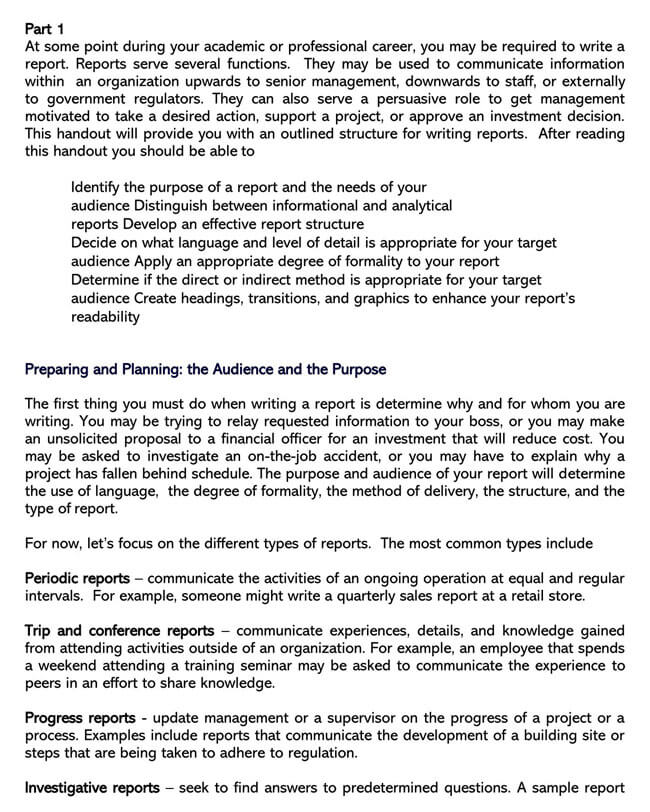
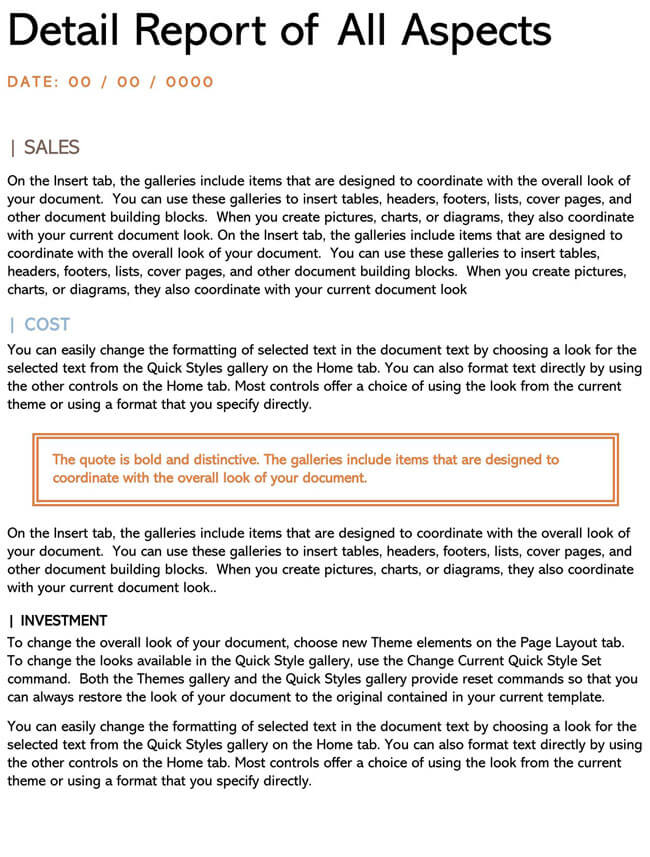
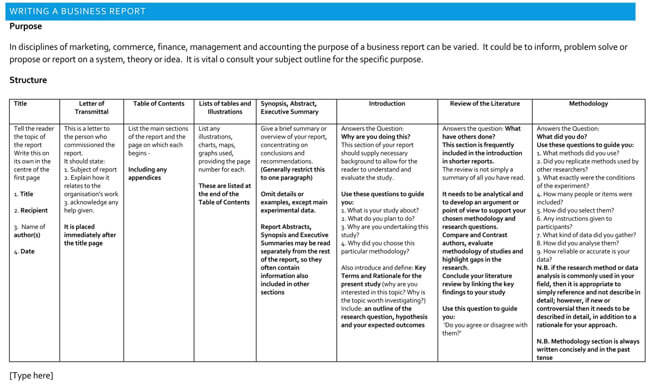

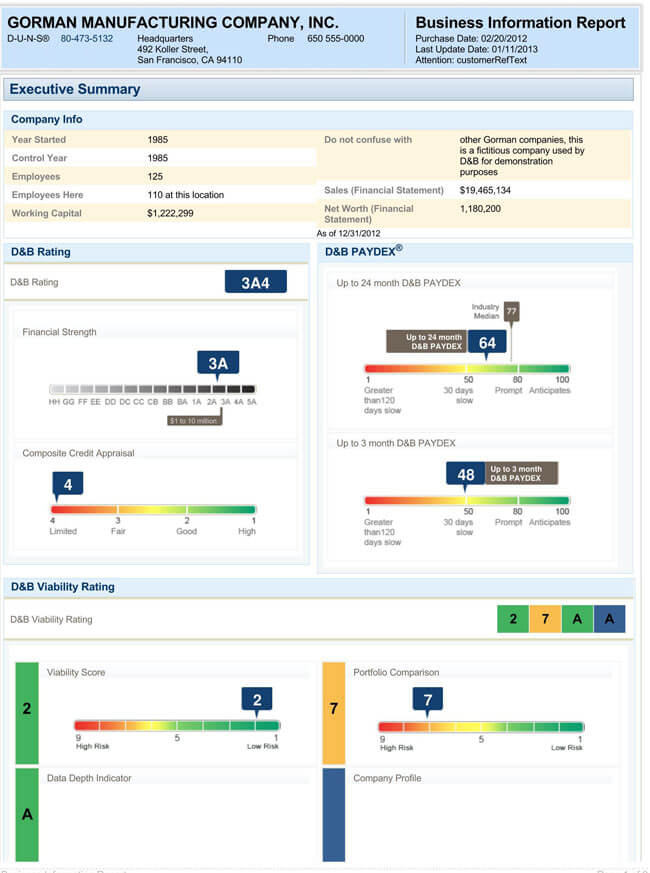
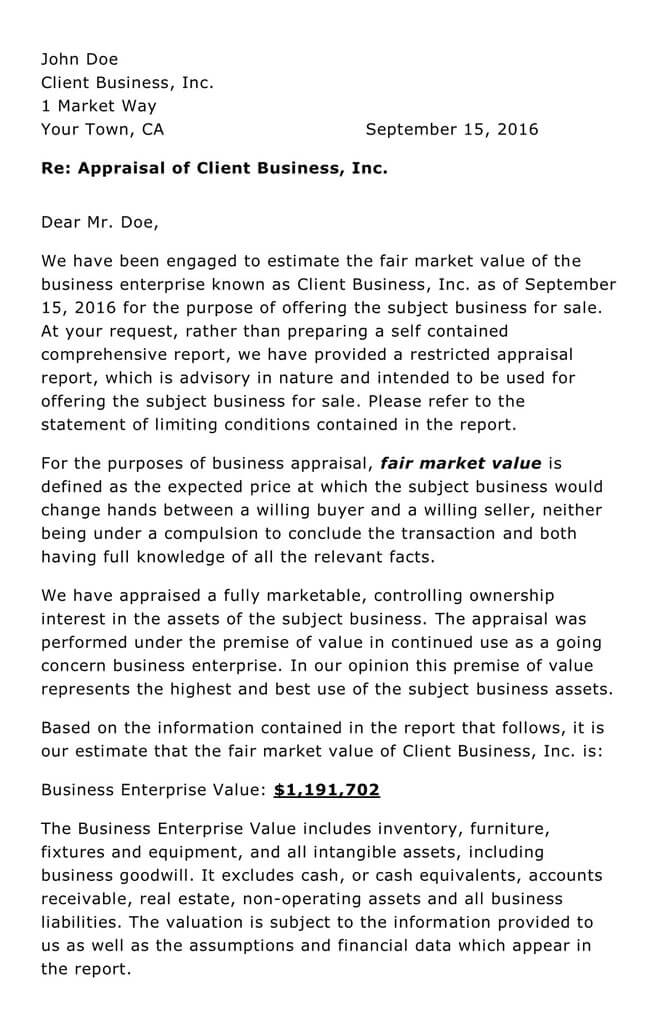
Types of Business Report
Business reports vary with situations and purpose. So, what are the different types of business reports, you may ask? Below we have provided some of the more common business reports; however, they are not limited to those mentioned.
They include:
Informational report
It is used when objective information about a particular issue is needed. It provides impartial facts with no explanation about the reasons and probable of the situation at hand. An informational report can be used to give information such as the number of employees, their duties and responsibilities, or the departments they are positioned in. An informational report is basically used to bring forth certain information.
Analytical report
An analytical report is often used when a company wants to make a crucial decision. The report is used to analyze the issue at hand, bring forward the relevant information, provide an explanation and conclusion regarding the issue. An analytical report can be regarded as a one-stop-shop for matters regarding a particular issue.
Research report
Research reports are often required when a company wishes to venture into something new, such as a new geographical location, product, etc. The company utilizes a team of specialists or researchers to research a particular topic and collect the available statistics and data, such as case studies and make informed suggestions that would influence the decision(s) to be made. The conclusion is often based on the information highlighted in the informational and analytical reports.
Explanatory report
This type of report is used to explain the dynamics of a particular situation or topic to help people understand, for example, an explanatory report for research. Such an explanatory report will highlight the reasons, methodology, sample sizes, and other aspects of the research. It should include the findings of the research.
Progress report
A progress report is used to illustrate how things are going in a certain department or project within a company. Progress reports are not associated with intense analysis or research as they are simply a mere statement of facts. They are important in monitoring and evaluating performance and can be used to make follow-ups on progress made in company strategic plans. A progress report can be prepared as frequently as weekly. They are often needed at certain milestones.
Feasibility report
This type of report is used to determine the practicability of an opportunity or the causes of a problem. It evaluates the social, economic, financial, technical, legal, and political aspects of a proposal to determine its feasibility. The end result should determine whether the proposal is worth venturing into, and in the case of a problem, it determines where adjustments can be made.
Compliance report
It is written when a company acts as a gesture of accountability by showing how it complied with the standards, rules, and laws set by regulatory bodies or government agencies such as Internal Revenue Services (IRS). It can be used in handling situations such as compensations, filing taxes, dealing with complaints, etc. It is important as companies are legally obligated to operate within these regulations, and failure will often lead to penalties, fines, and in some cases, imprisonment.
Periodic report
It is used to elaborate on the performance of products, services, or policies in a company. Periodic reports major on numbers. Periodic reports can be based on daily, weekly, quarterly, or annual.
Situational report
It is a report that is used to give a quick understanding of the management of an emerging situation by defining its nature and facts around it. It is focused on a specific topic, for example, an employee strike.
Yardstick report
It is a report that is used to evaluate multiple solutions to a problem. It highlights the criteria used in arriving at each solution. The dynamics of each solution are then explained, and recommendations are made.
With that in mind, it is important to note that the difference between progress and periodic report is that, unlike a progress report which is narrative in nature, a periodic report is majorly focused on numbers. Progress reports are often used in projects or while periodic reports are more based on routine activities in the company.
Writing a Business Report
A well-written report should always be your objective. How well a report is written will sometimes depend on your skills or ability to follow the correct procedure of writing one.
Below are some of the steps you can follow to ensure that you come up with an up to standard business report:
Think and plan
Like the famous words say, if you do not plan, you plan to fail. Planning should be the first thing you do when asked to write a business report. Research on what should be included in the type of report you plan to write, gather and note down information you wish to include. Think of creative ways you can use to improve the quality of your report.
Follow the format
There are various formats you can adopt while writing a business report. Ensure you use a format you are more familiar with. In some companies, there could be a more preferred in-house format; in such a case, you should use that one. Another alternative when choosing a format could be asking the person who needs the report their preferred format. The format has a huge impact on how professional a report looks.
Put a title
The report is as effective as its title. A title could be given to you, but sometimes you may have to come up with one yourself. Its title specifies the topic to be discussed in the report. The title is clear and visible. The title should be accompanied by the date, your name and the names of other people involved in the reporting
Mention table of content
Always provide a table of contents. It acts as a guide to the reader and a visual summary of the contents of a formal business report. The headings should appear exactly as they appear in the report. Even though it appears at the beginning of the report, always write it after you have finished writing the report.
Add a summary
Also known as an abstract, it gives the reader an overview of the contents of the report. It touches on the key points discussed and notes from your conclusion as well as the recommendations. A summary is not mandatory, especially in short reports. If you are not sure whether to include one, confirm with the reader if they require one. The reader may sometimes have time to only read the summary; therefore, try and make it as reflective of the report as possible.
Write an introduction
Following the summary is the introduction. It introduces the reader to the topic, purpose, and background information on the topic. If there are any exceptional keywords, terminologies, or abbreviations used, provide a definition.
Craft a body
Any relevant information required by the reader, such as facts, statistics, etc., should be provided in the body. This is especially for reports such as informational, situational, progress, and periodic reports that require little or no research.
Methodology overview
This section is used to let the reader know of the methods employed in collecting and analysing information so as to write the report. It could also be a highlight of your sources of information. The methods could be qualitative or quantitative. A justification for using the said methods should be provided.
Explain the findings
This s a presentation of the results obtained from your research. The results should be logical and detailed enough to be used in decision-making. To make them easier to read, you can choose to use headings, subheadings, numbering, or tabular forms. Illustrations such as graphs, percentages, and pie charts can be used. It involves the use of analyzing skills.
End with conclusion and recommendations
Once you have established the facts on the ground, you can now evaluate and assess your findings to draw conclusions, identify gaps or opportunities and give appropriate recommendations. Recommendations should be given as measurable courses of action. Given recommendations should be accompanied by their impact on the company. It is advised that recommendations should be result-driven.
Add references
References are used to acknowledge any third-party sources of information used in the report. They include business documents, academic articles, publications, or news reports. Referencing declares that data used in the report is factual and where readers can obtain the original documents.
Add bibliography and appendices
This section is not mandatory; however, it is included where additional research or information relevant to the topic was obtained. It includes pictures, charts, interview transcripts, etc. It is provided at the end of the report, so that should the reader choose to look into it, they can even though it was not part of the main report.
After adding all the information, proofread your report for grammatical errors and typographical mistakes.
Frequently Asked Questions
The length of a business will often depend on the topic and its scope. However, a ten double-spaced page report could suffice. It can be shorter or longer depending on the mentioned factors. Always try to be concise and direct to the point.
Formally, a formal report format should have the title, executive summary, introduction, body, methods and findings, conclusions and recommendations, references, and appendices.
Final Thoughts
A business report can be used in various situations in a company. Therefore, regardless of your position, it is important to learn how to craft one. Always understand what is being asked of you before writing. Despite the different types of business reports, they all have some standard components: title page, summary, table of contents, introduction, methods and findings, conclusions and recommendations, references, and appendices. Ensure to include each of the mentioned sections, and your report will always be seen as formal. Even when more detailed reports are needed, always remember you are capable. Good luck!




